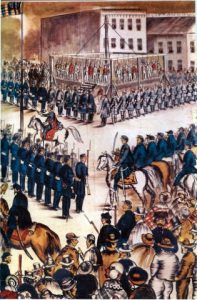
History never crawls or walks. It runs. Sometimes silently as if on the softer sands of time. Sometimes we can hear its footsteps louder as they hit the hot pavement.
As I write this on January 19, 2017, Barack Obama is still the President of the United States. But only just. Great Britain is still a member of the European Union. But only just. And after the painful lessons of the 20th century, nationalism is still a sleeping giant. But only just. The giant is waking.
Since the fall of the Berlin Wall in 1989 to the vote for Brexit in 2016, Europe and the United States have known over a quarter century of relative peace. No wars, hot or cold. Some exceptions: Sarajevo, Srebrenica, 9/11. But for the most part, some 10,000 mornings, afternoons, and evenings have unfolded in secure calm. But as in the eye of a storm, calm can be deceptive. And temporary. Read more











